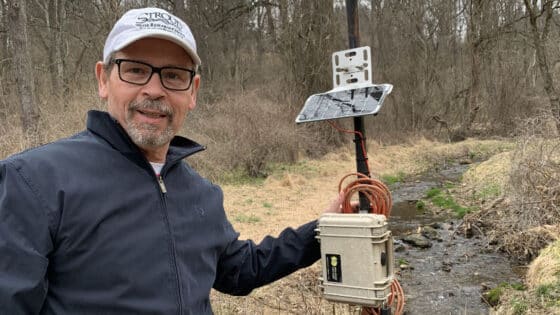Ensign, S.H., and M.W. Doyle. 2005. Limnology and Oceanography, 50(6):1740–1751.
doi: 10.4319/lo.2005.50.6.1740
Abstract
We examined the effect of in‐channel flow obstructions such as vegetation and coarse woody debris (CWD) on transient storage and nutrient uptake by using experimental channel manipulations. Transient storage and nutrient uptake were measured under existing conditions in a vegetated agricultural stream and a shaded blackwater stream, and measurements were repeated after removal of vegetation and CWD. Removal of vegetation and CWD decreased transient storage area (As) by 61% and 43% in the agricultural and blackwater streams, respectively, and decreased the portion of median travel time owing to transient storage (Fmed) by 45% and 56%, respectively. Flow baffles were then added to create in‐channel transient storage in both streams. Baffles increased As 227% and 119% for the agricultural and blackwater streams, respectively, and increased Fmed 309% and 132%, respectively. Ammonium and PO4 uptake for the blackwater stream, determined by using nutrient addition experiments and expressed as the mass transfer coefficient (Vf), decreased after CWD removal by 88% and 38%, respectively. Ammonium Vf in the blackwater stream increased 143‐fold after baffles were installed, and PO4 Vf increased from — 1.7 to 53 mm min−1. Nutrient uptake rates were not calculated for the agricultural stream because sediment disturbance inadvertently altered the sediment‐water column nutrient equilibrium. Results from both streams demonstrate that in‐channel transient storage, rather than hyporheic storage, can be a substantial portion of overall transient storage in streams. In‐channel transient storage influenced nutrient uptake in a blackwater stream, although these results could not be corroborated with data from the agricultural stream.


